
Top 6 Destinations for Travel Photography in Northern Vietnam
- on May 28, 2024 By: Ngoc Nguyen
Discover the artistic side of Vietnam. This article presents ideal attractions for creating photographic works while fully enjoying your trip to the North of the country.
HANOI
Hanoi, the capital of Vietnam, seduces tourists with the serene ambiance of an ancient city as well as the vibrant atmosphere of modern life. The city offers a wealth of photographic inspiration, from impressive monuments and elegant architecture to bustling narrow streets and scenes of everyday life. Check out the best places in Hanoi where you can stroll and capture exceptional photos below:
Hanoi Old Quarter
The Old Quarter is the historic heart of Hanoi, offering a wealth of photographic subjects. Here you will find ancient architecture, a bustling railway street, picturesque alleys, local shops and markets, as well as iconic landmarks such as Hoan Kiem Lake and St. Joseph Cathedral. Arm yourself with your camera and set out to discover these visual treasures.
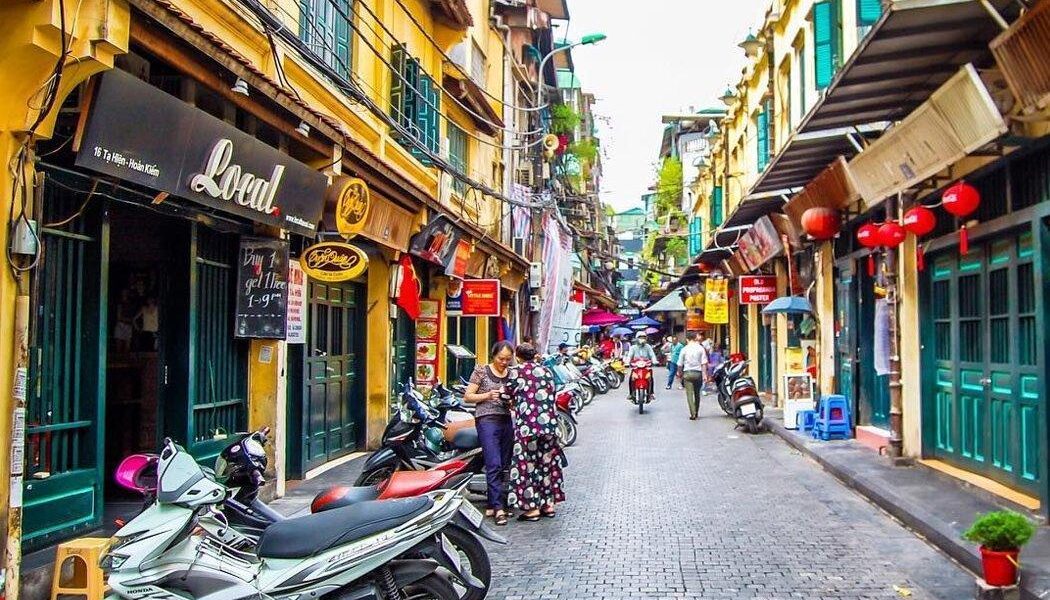
Hanoi Temple of Literature
Vietnam's first university, the Temple of Literature is an unmissable tourist site. Its beautiful old pavilions, green courtyards, and elegant architecture offer numerous photographic opportunities. Besides capturing images, visitors can enjoy the tranquility of this historic place, nestled in the heart of the bustling city.
West Lake
West Lake, the largest natural lake in Hanoi, offers a peaceful atmosphere contrasting with urban dynamism. Located North of the city, this lake is surrounded by spiritual sites such as Tran Quoc Pagoda and Quan Thanh Temple. It’s also one of the best places to photograph the sunset, with stunning views and beautiful light at the end of the day.
Duong Lam Ancient Village
The ancient village of Duong Lam, famous for its laterite houses and traditional way of life, is a window onto the Northern Vietnamese countryside. This picturesque village, with its centuries-old structures and leisurely pace of life, makes an enchanting location for authentic photos of rural life in Vietnam. For those wanting to get away from the cityscape, Duong Lam offers a charming and photogenic alternative.
These iconic places in Hanoi offer varied landscapes and unique atmospheres, ideal for photography enthusiasts. By exploring these sites, you will not only be able to capture spectacular images but also experience a deep immersion in the culture and history of Vietnam.

>> Read more: Top 12+ best things to do in Hanoi
HALONG BAY
It is difficult to find the right words to describe the spectacular landscape of Ha Long Bay. To capture the best photos of this extraordinary site, it is recommended to embark on a Ha Long Bay Cruise, as this experience allows you to cross the most remarkable sites and admire the beauty of this UNESCO World Heritage site at different times of the day. Here are the best places in Ha Long Bay to take sensational photos:
Titov Island
Titov Island is renowned for offering the best panoramic view of Ha Long Bay. It is an essential stopover for many photography enthusiasts. When you go to the island, don’t forget to climb the mountain to its summit. From here, you can marvel at a bird's eye view of the bay, capturing the splendor of this breathtaking natural site.
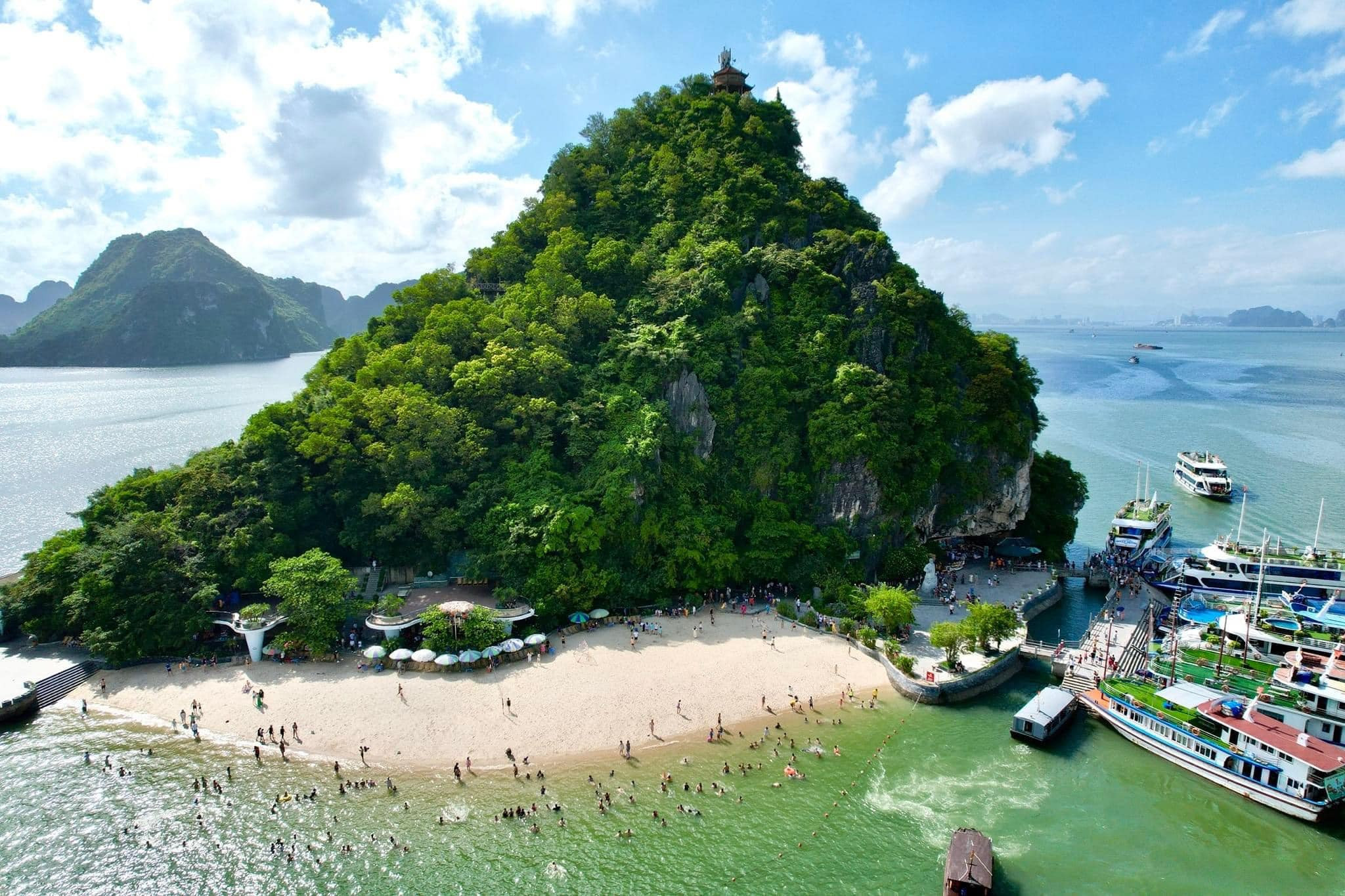
Sung Sot Cave
Located on Bo Hon Island, Sung Sot Cave is considered the most beautiful cave in Ha Long Bay. It also offers one of the best views of the bay. The cave entrance and exit are perfect spots for iconic photos, with impressive rock features and captivating perspectives of the surrounding sea.
>> Read more: The top 6 most beautiful caves to visit in Halong Bay
Viet Hai Village
Nestled in the Cat Ba National Park, Viet Hai Village is a place where the serenity and beauty of the mountainous landscapes reign. This village offers perfect harmony between nature and rural life. As you explore the village, you will have the opportunity to capture authentic photographs of daily life and the picturesque landscapes that surround it. The tranquil charm of Viet Hai makes it an ideal place for photographers looking for unique and touching images.
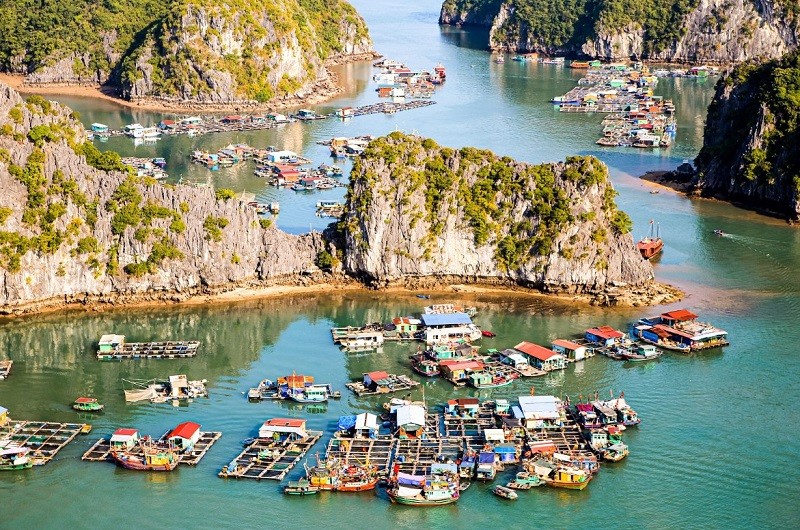
Thien Canh Son Cave
Thien Canh Son Cave, located in Bai Tu Long Bay, is one of the best places for photography enthusiasts. This cave offers a unique opportunity to capture spectacular images from different angles.
The entrance to Thien Canh Son Cave welcomes you with breathtaking views of the bay, allowing you to capture seascapes of serene beauty. The interior of the cave reveals a magical world with its stalactite and stalagmite formations which seem frozen in time. Every corner of the cave presents unique and fascinating perspectives for photographers, with natural light effects that add a magical dimension to each shot. At the exit of the cave, another striking panorama opens before you. Here you can capture the splendor of Bai Tu Long Bay from a different perspective, providing a new appreciation for this natural landmark. The combination of interior and exterior views of the cave allows for a varied portfolio rich in contrasts, highlighting the diversity and magnificence of the region.
SAPA
Sapa, nestled in the heart of the majestic Hoang Lien Son mountain range, is a true jewel of Northern Vietnam. This remote region charms with its small tribal villages, where many local ethnic minorities live. For lovers of natural beauty and regional culture, Sapa offers an unforgettable tourist experience rich in local discoveries.
Fansipan Mountain
Fansipan Mountain, known as the roof of Indochina, is a must-see during your visit to Sapa. Reaching its summit offers breathtaking views that make you feel like you're floating in a celestial paradise. The cable car from Fansipan Legend is the quickest and easiest way to reach the summit, where you can capture stunning photos of the panoramic view
The gate to paradise – O Quy Ho Pass
Heaven's Gate, located on the road to Lai Chau province, overlooks the spectacular O Quy Ho Pass and the magnificent valley below. This site, which is home to one of the four great passes of the North, offers heart-stopping landscapes. It’s a must-visit location for photographers looking to capture Sapa’s stunning panoramas.
Muong Hoa Valley
Close to downtown Sapa, Muong Hoa Valley is an enchanting place for hiking and sightseeing exploration. This valley attracts visitors with its magnificent rice terraces, rural trails, and remote tribal villages. For an even more immersive experience, rent a local ethnic costume and take authentic photos in the heart of this idyllic nature.
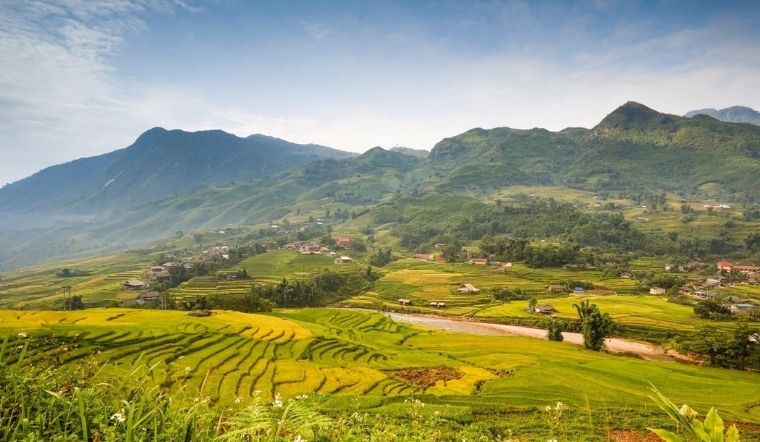
Sunday market in Bac Ha
The Sunday market in Bac Ha is a window into local daily life in Sapa. This vibrant market brings together members of different regional ethnic groups, who sell a wide range of local crafts, culinary specialties, furniture, and much more. This colorful and lively place is perfect for authentic shots that capture the essence of local culture.
Sapa, with its astonishing landscapes and cultural richness, is a paradise for photographers and lovers of authentic discoveries.
Whether you climb Mount Fansipan, admire the views from Heaven's Gate, explore Muong Hoa Valley, or stroll through Bac Ha Market, every corner of this region promises unforgettable photographic opportunities.
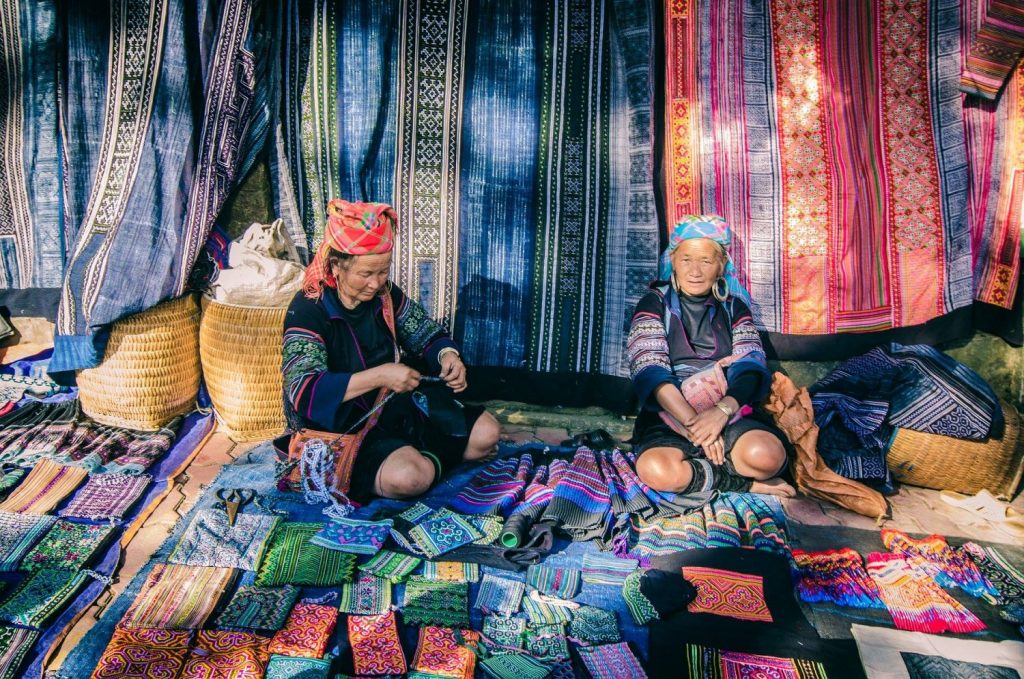
MU CANG CHAI
Less known than Sapa, Mu Cang Chai is a true dream for any photographer or backpacker. Located in Yen Bai province, this district offers fascinating views of the rice terraces that stretch across the region. Mu Cang Chai is particularly lively during harvest season when the fields turn a vibrant golden hue. Here are some exceptional places in Mu Cang Chai to take the best photos:
Mam Xoi Hill
Mam Xoi Hill is considered the symbol of Mu Cang Chai. With its unique shape resembling a large tray of sticky rice, this hill becomes a popular subject for all photographers visiting Mu Cang Chai. Its picturesque landscape and rice terraces create a perfect setting for memorable photos.
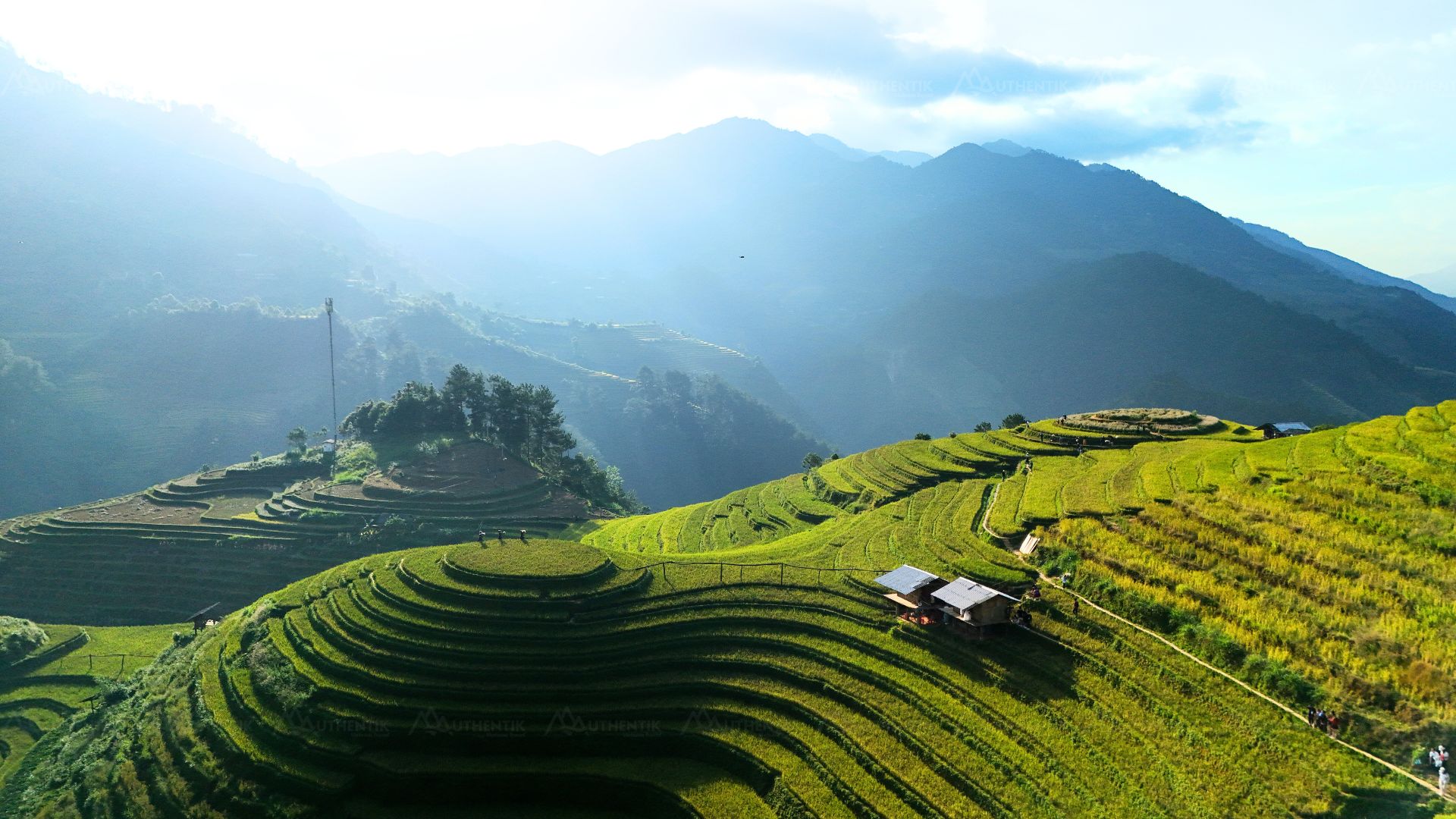
Mong Ngua Hill
The impressive curves of the rice terraces on Mong Ngua Hill create a captivating spectacle. This location is among the best for watching the sunset in Mu Cang Chai and also serves as an ideal spot for photography. The interplay of light at dusk on the rice terraces adds a magical touch to the images captured here.
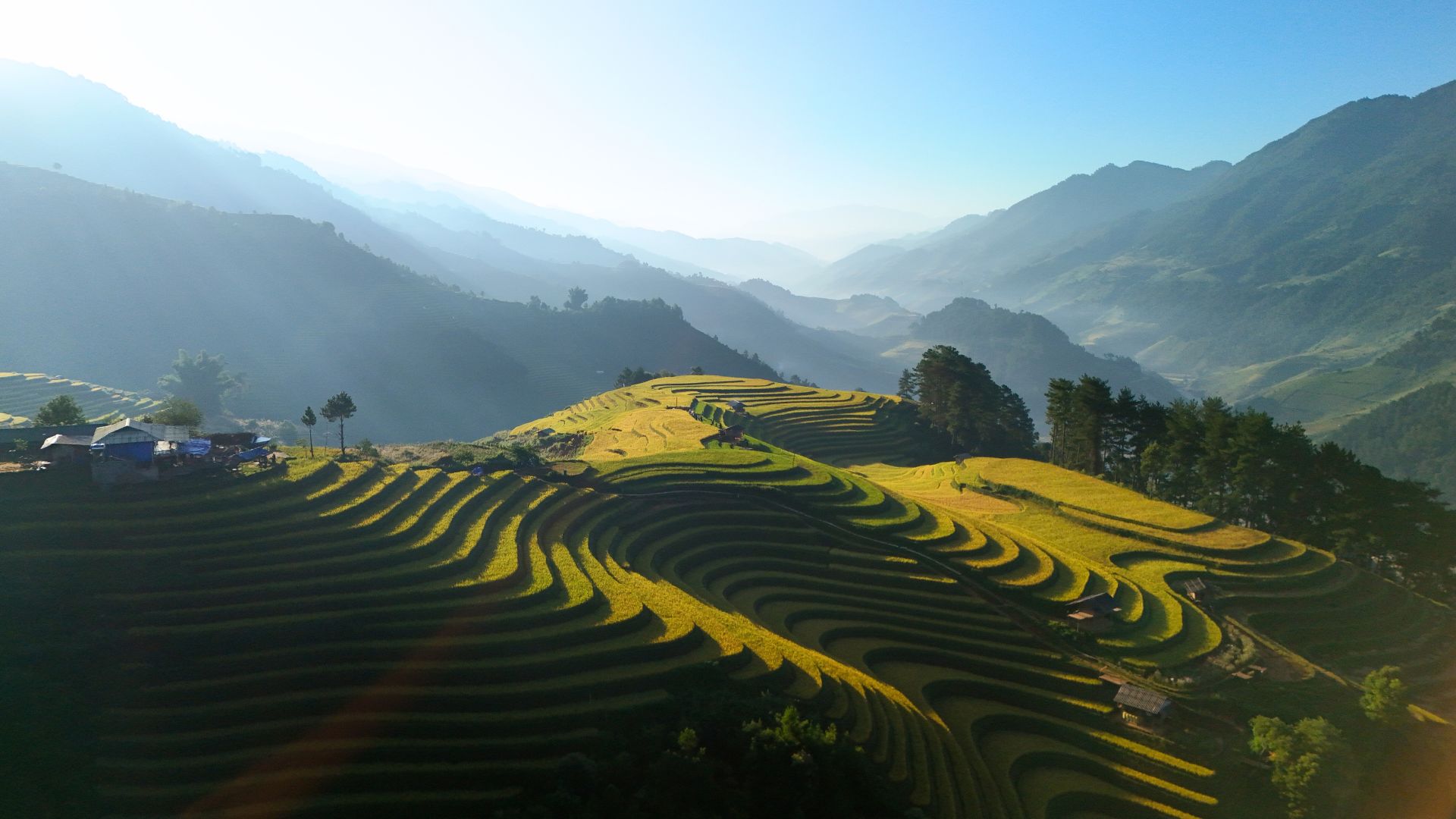
Mui Giay Hill
Looking like a shoe heel when viewed from above, Mui Giay Hill offers stunning panoramic views of the river that surrounds it. Travelers can enjoy the beauty of this hill and its rice terraces by taking the trails or trying their hand at paragliding. These activities allow you to capture varied and spectacular perspectives of this unique landscape. Mu Cang Chai, with its striking landscapes of rice terraces, is one of the essential destinations for photography enthusiasts and travelers in search of authentic adventures. Whether it is Mam Xoi Hill, Mong Ngua Hill, or Mui Giay Hill, each site offers unique photographic opportunities and total immersion in the natural beauty of Northern Vietnam.

Mu Cang Chai is waiting for you to come and create some amazing photographic art. But before that, let's admire the awe-inspiring landscape of Mu Cang Chai through this video by Authentik Vietnam
HA GIANG
Ha Giang is favored by the sublime beauty of the rock formations in the remote region of the far North of Vietnam. The steep topography causes worry at first, however, it is an interesting challenge for any traveling photographer. The natural masterpieces of Ha Giang will surely amaze you once you set foot on this land.
Here are some of the best places in Ha Giang for photography:
Ma Pi Leng Pass
Nicknamed “Vietnam’s King of Mountain Passes,” Ma Pi Leng is famous for its winding trails along the rugged mountain ranges of Ha Giang. Conquering this pass offers visitors an experience that is both thrilling and exhilarating. This site is also a wonderful opportunity to take epic photos of Vietnam's mountainous landscapes, with breathtaking views that stretch as far as the eye can see.
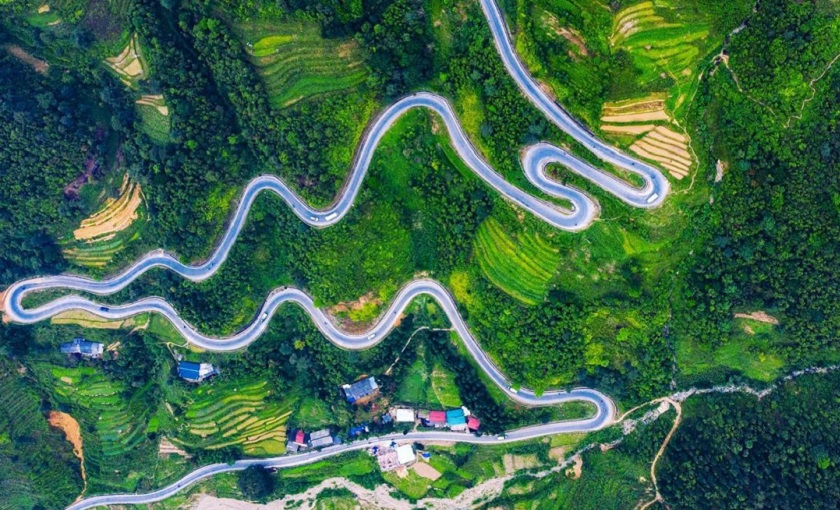
Hoang Su Phi
While the northwest is known for its rice terraces in Mu Cang Chai and Sapa, Hoang Su Phi in Ha Giang is renowned for being one of the best places to admire the beauty of the Northwest Vietnam. The harvest season, from September to October, is the ideal time to capture the most beautiful photographs of Hoang Su Phi when the rice terraces take on shimmering golden hues.
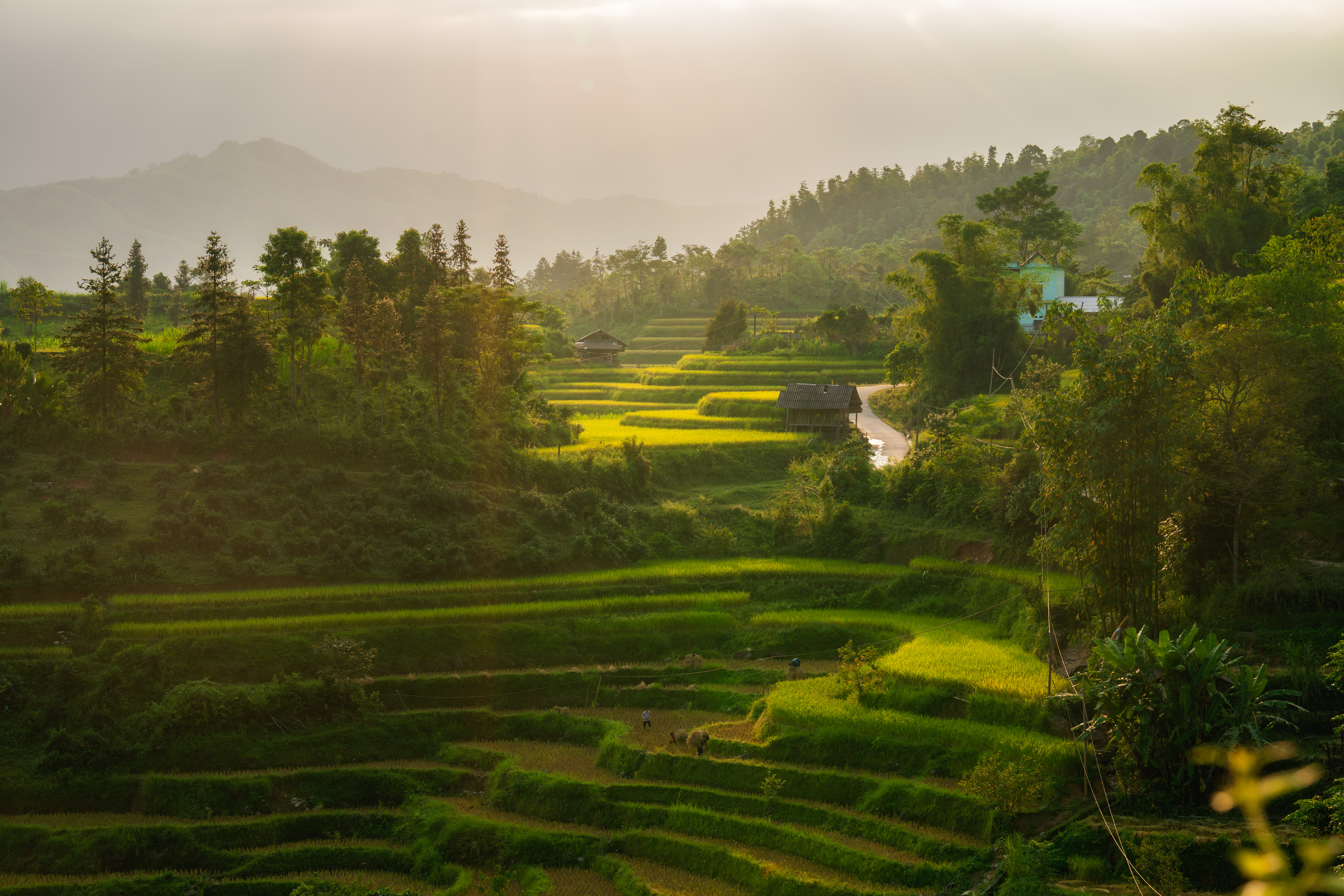
Nho Que River
Flowing through the majestic Ha Giang Mountains, the Nho Que River offers travelers the opportunity to admire breathtaking landscapes from its waters. A boat trip on the Nho Que River allows you to get closer to the Tu San Canyon, the deepest canyon in Southeast Asia. The impressive views from the river provide unique and memorable perspectives for photographers.

Dong Van Karst Plateau Geopark
Dong Van Karst Plateau Geopark is a unique geological area composed of 4 districts of Ha Giang, with approximately 80% of its total area in limestone. Besides Ma Pi Leng Pass and Nho Que River, this park is full of many attractive sites to create exceptional photographic works. The karst formations and spectacular landscapes of the plateau provide a stunning backdrop for any photography.
Ha Giang, with its rugged landscapes and breathtaking views, is a must-visit destination for photographers and travelers seeking wilderness and authentic beauty. Whether exploring the Ma Pi Leng Pass, admiring the rice terraces of Hoang Su Phi, navigating the Nho Que River, or discovering the Dong Van Geopark, every corner of this region promises unforgettable photographic opportunities.
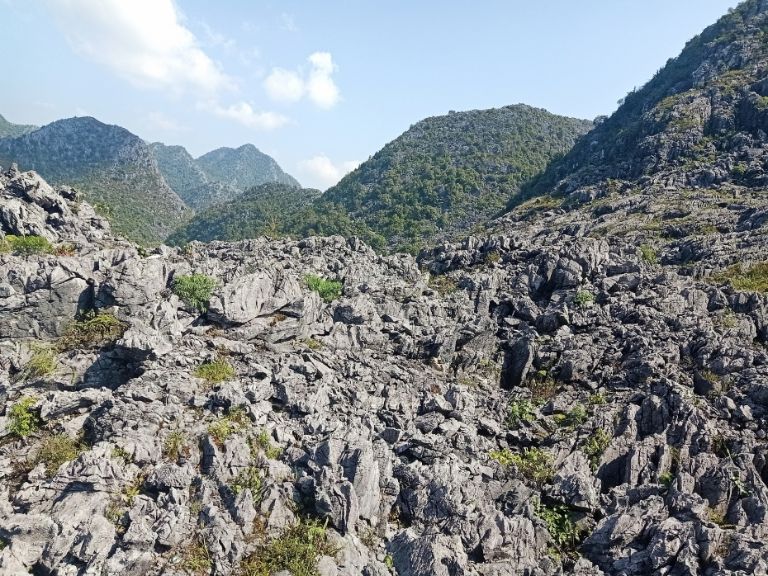
NINH BINH
Located about 100 km South of Hanoi, Ninh Binh is a popular destination for its historical riches and breathtaking natural landscapes. It attracts not only Vietnamese but also many foreign visitors. Check out the most famous photography spots in Ninh Binh below that you shouldn't miss.
Trang An Scenic Complex
The UNESCO World Heritage-listed Trang An Scenic Complex offers stunning beauty with its mountains, rivers, green spaces, and cave systems. It is one of the most iconic tourist sites in Ninh Binh. The boat ride through Trang An allows you to capture spectacular photographs of its majestic landscapes from the start to the end of your tour.
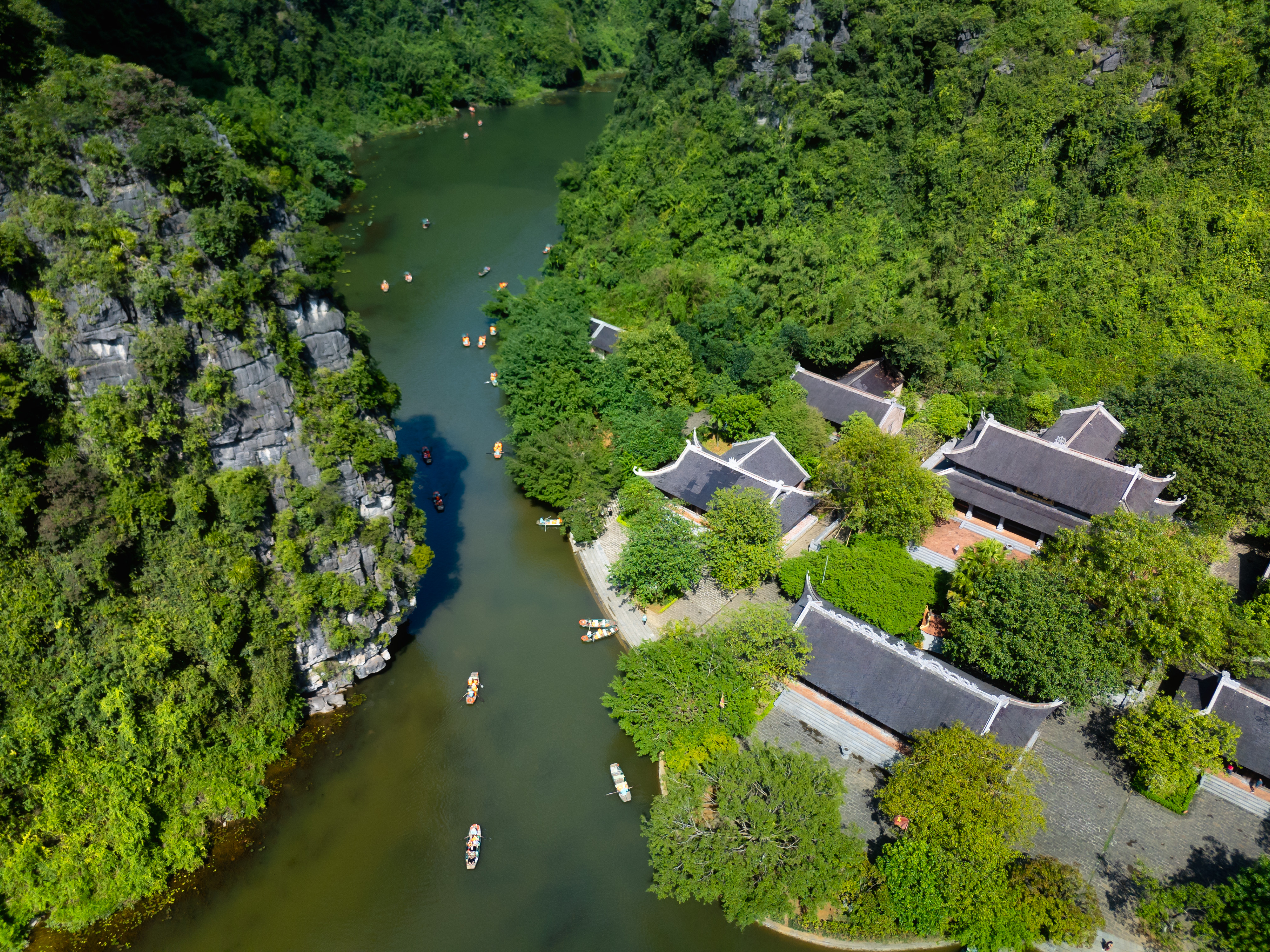
Tam Coc
Tam Coc, nicknamed "Halong Bay on land", is famous for its rural beauty characterized by rice fields lining the shores. The best time to take photos in Tam Coc is during the harvest season when the fields turn golden hues. The peaceful and green landscapes offer an idyllic setting for memorable photos.
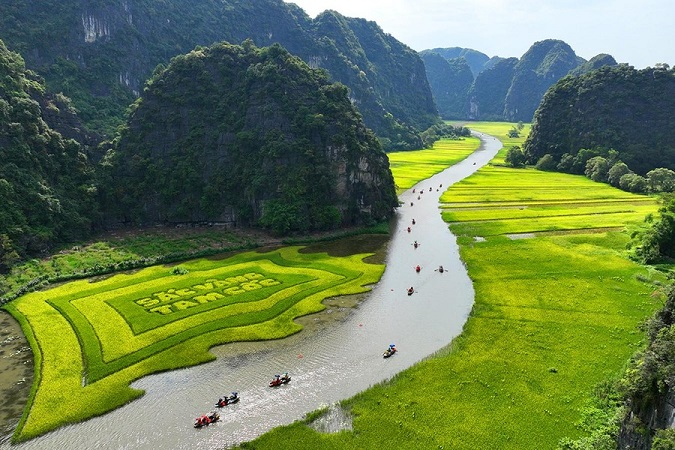
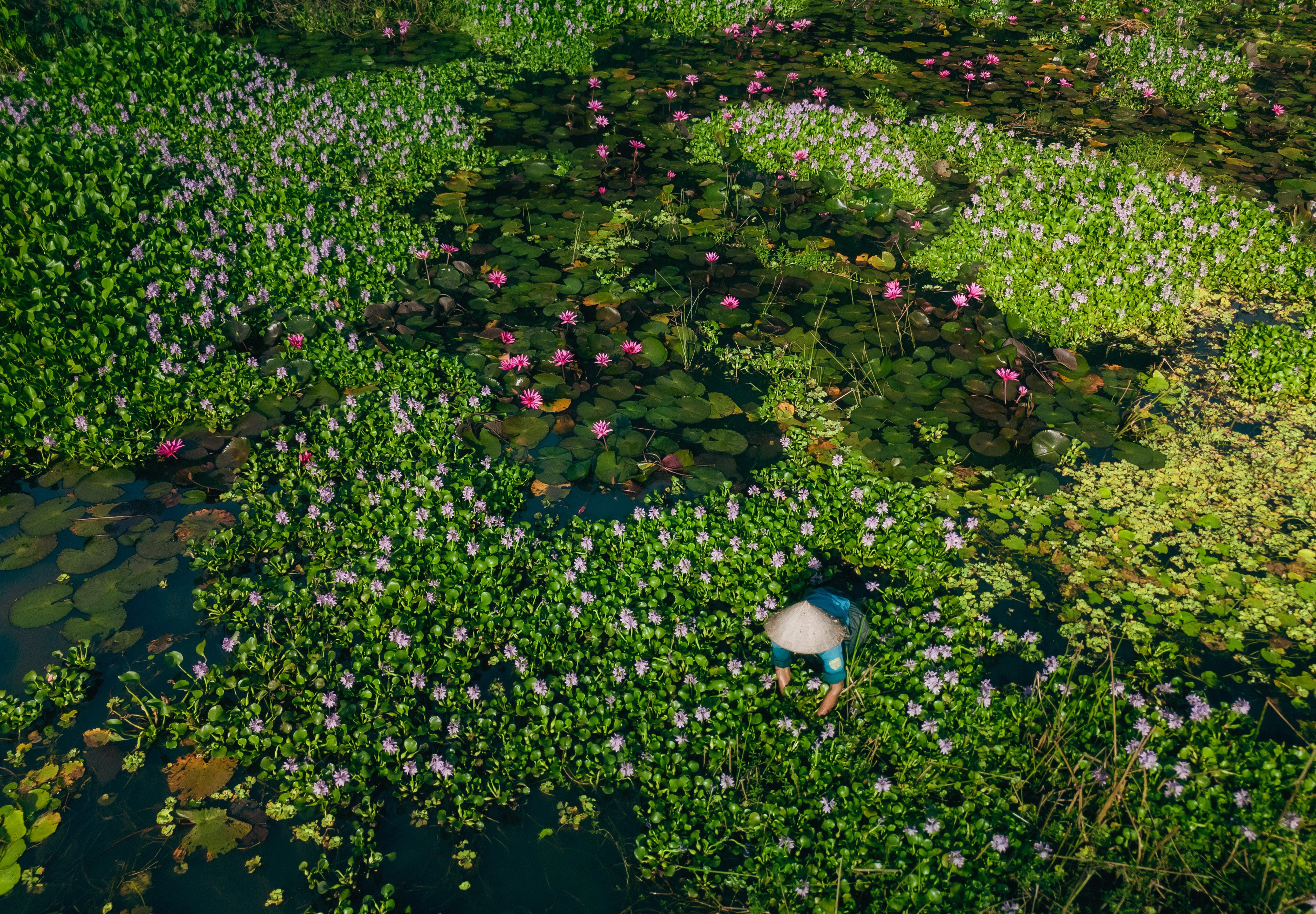
Admire the beauty of Tam Coc in motion with us:
Mua Cave
Mua Cave, or Dance Cave, overlooks Tam Coc and is a must-see spot for spectacular photos in Ninh Binh. To reach the summit, you have to climb around three hundred stone steps, but the effort is well rewarded with impressive panoramic views of the surrounding rice fields and mountains. It’s a perfect location for photographers looking for stunning perspectives.
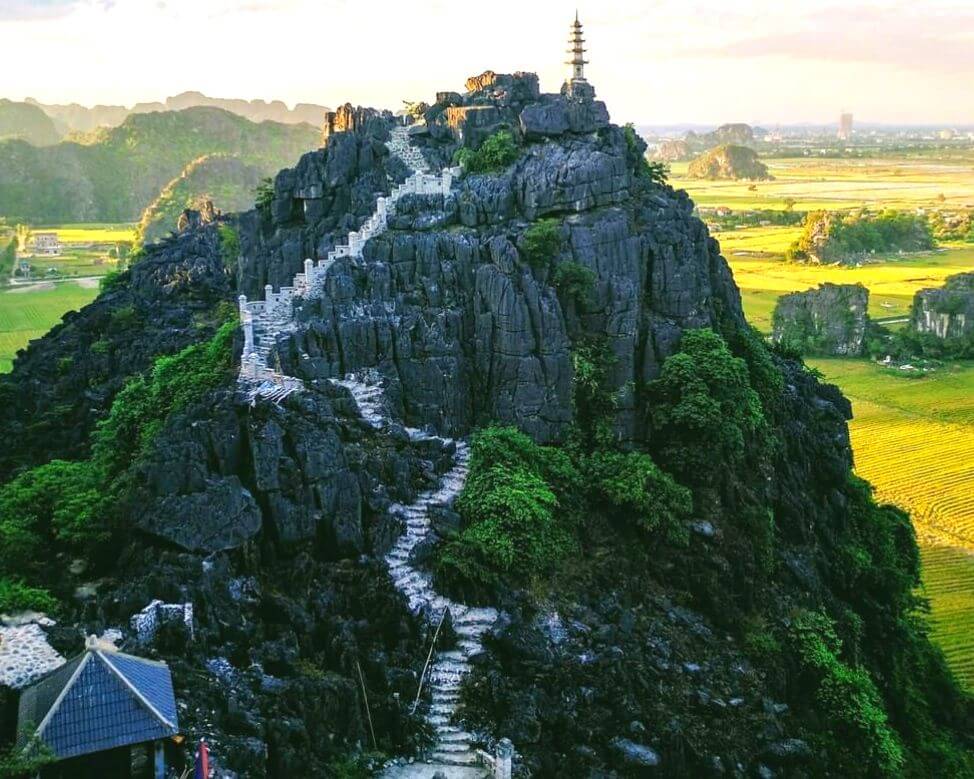
Am Tiem Cave (Tuyet Tinh Coc)
Am Tiem Cave, often called Tuyet Tinh Coc, is a hidden gem of Ninh Binh. Surrounded by green mountains and bordered by a calm lake, this cave offers a serene and enchanting setting. Less visited than the other sites mentioned, Am Tiem Cave stands out for its tranquility and almost mystical atmosphere, ideal for unique and peaceful photos.
Ninh Binh, with its picturesque landscapes and historical sites, is a must-visit destination for photography enthusiasts and travelers seeking natural beauty and authentic culture. Whether you explore the Trang An Scenic Complex, cruise through the rice fields of Tam Coc, climb to Mua Cave, or experience the serenity of Am Tiem Cave, each location promises unforgettable photographic opportunities.
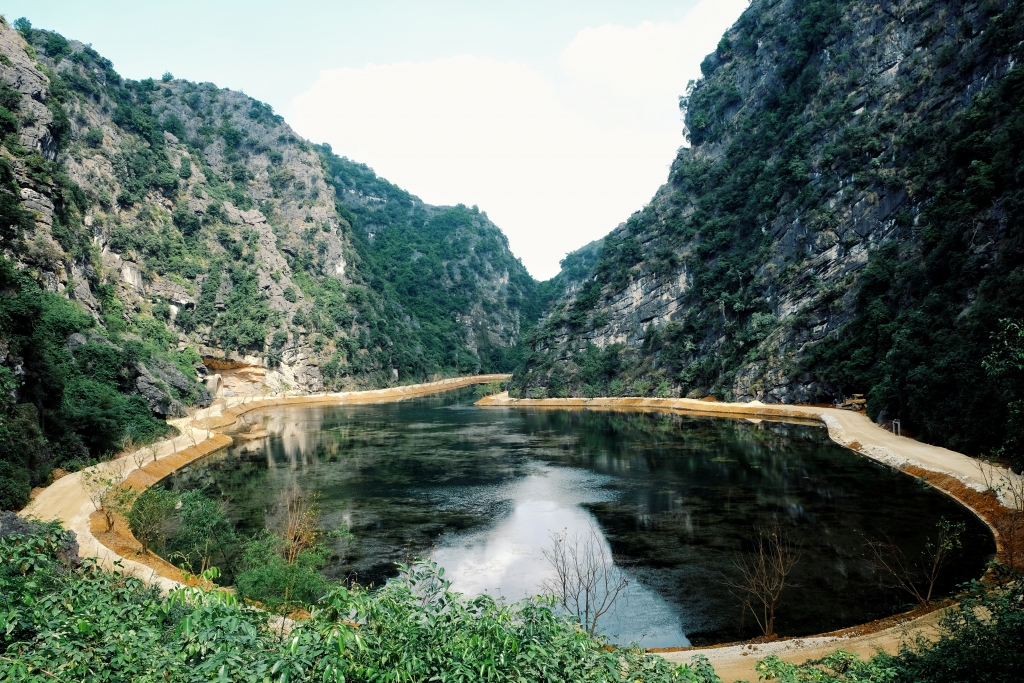
Tips for Successful Travel Photography in Vietnam
Vietnam, with its breathtaking landscapes and rich cultural diversity, is a dream destination for travel photographers. To get the most out of your photography trip to Vietnam, here are some practical tips.
Plan your route
Before you go, do some research on the places you want to photograph. Vietnam offers a variety of landscapes, from the rice terraces of Sapa to Phu Quoc beach, to historic cities like Hanoi and Hoi An. Plan your itinerary to maximize the time spent in each location and allow you to capture the best shots.
Get up early and go to bed late
The soft morning and evening light is ideal for photography. Sunrises and sunsets offer stunning colors and soft shadows. Additionally, tourist spots are less crowded early in the morning, allowing for more tranquil and authentic scenes to be captured.
Use a tripod
For long exposure shots, especially at sunrise or sunset, a tripod is essential. It will help you stabilize your device and get sharp images even in low-light conditions.
Explore local markets
Vietnamese markets are vibrant and colorful, filled with fresh products, traditional clothing, and welcoming people. They offer many opportunities for street photography and portraits. Be respectful and ask permission before photographing people.
Integrate the human elements
Scenes of daily life and human interactions add a narrative dimension to your photos. Farmers working in the rice fields, vendors at the floating markets, and artisans at work are all fascinating subjects.
Capture culture and traditions
Vietnam is rich in cultural traditions. Attend local festivals, religious ceremonies, and water puppet shows to capture the essence of Vietnamese culture.
Be prepared for weather conditions
The climate in Vietnam can be unpredictable, with monsoons and very sunny days. Bring protection for your equipment, such as waterproof covers, and be prepared to adapt your photography to the weather conditions.
Learn some basic words in Vietnamese
A few basic words in Vietnamese can greatly improve your interactions with locals. A simple “Xin chào” (hello) or “Cảm ơn” (thank you) can open doors and make people more willing to be photographed.
Use filters
Polarizing filters can help reduce glare and intensify colors, while ND (neutral density) filters are useful for long exposures in bright light. They can make a big difference in the quality of your photos.
Practice photographic ethics
Always respect the people and places you photograph. Don't disrupt everyday scenes and be aware of the impact you can have as a photographer. Ask permission when necessary and always be courteous.
Related articles:
>> Vietnam tour 15 days: What to do? What itinerary ideas do you have?
>> Tour 1 week in Vietnam: Good deals for a 7-day tour in Vietnam
Comment
Other Blog
Categories
Latest News
on 31 Dec, 2025
on 31 Dec, 2025
 Español
Español Français
Français






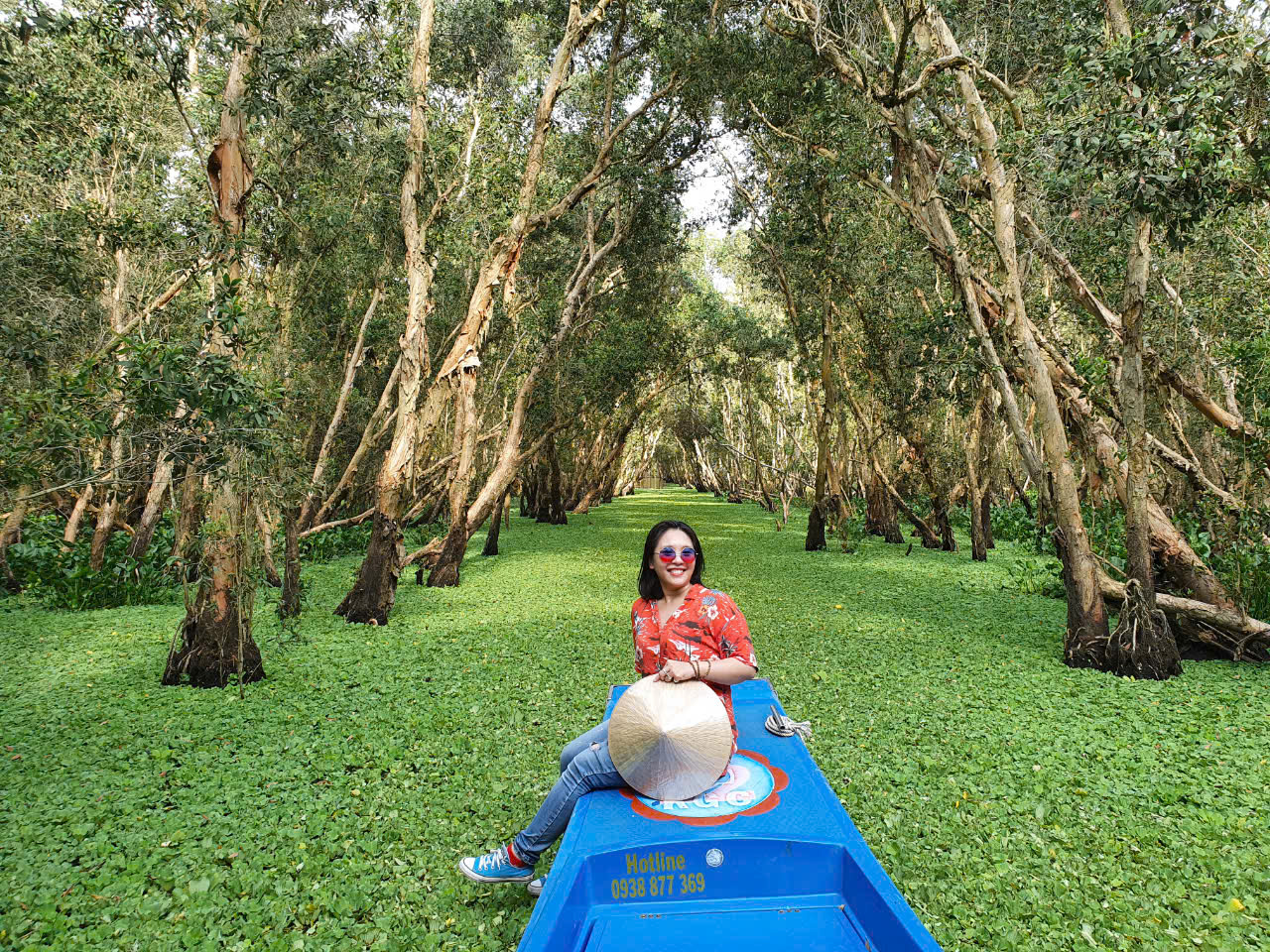
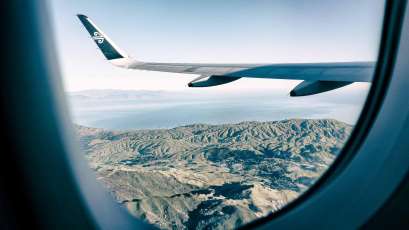

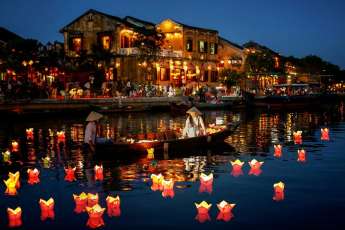
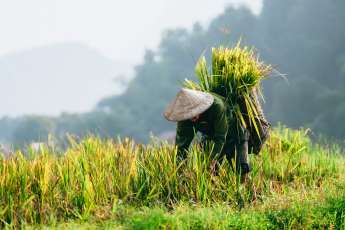









Morgane Ter Cock
on Dec 18, 2025HerbertPhomaMS
on Oct 19, 2025Lilyan Cuttler
on Oct 15, 2025Avenue17XC
on Sep 14, 2025Avenue18JL
on Jul 21, 2025